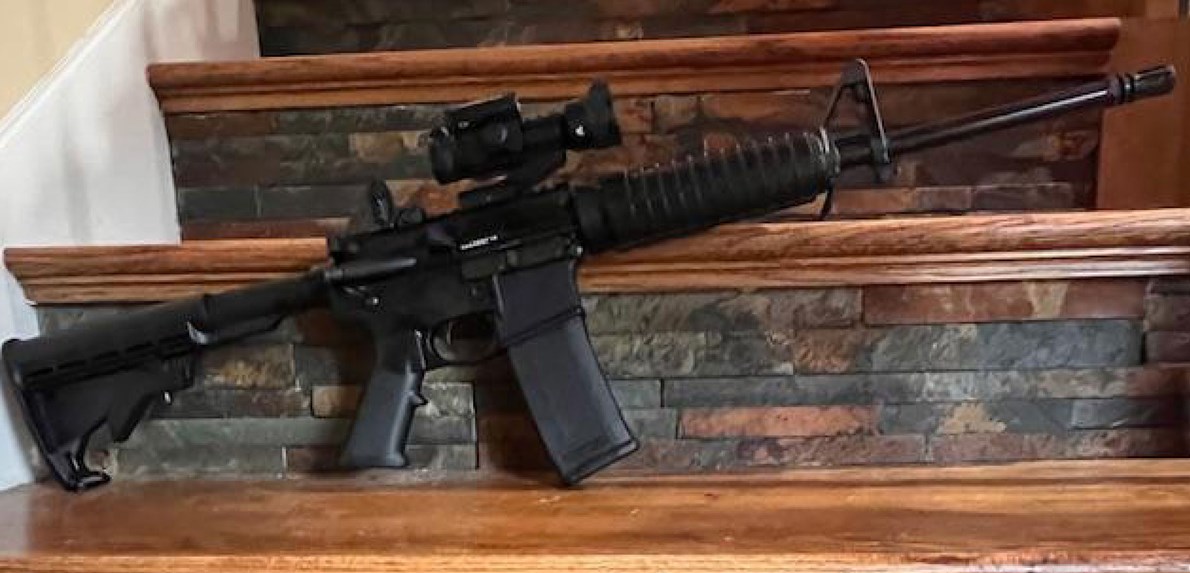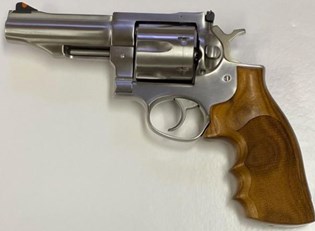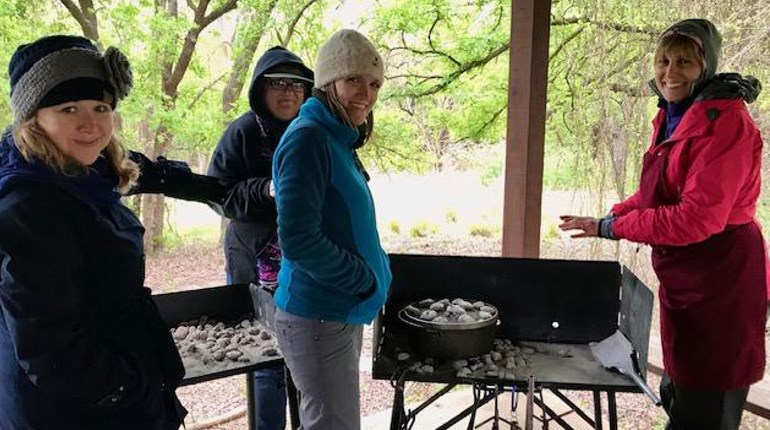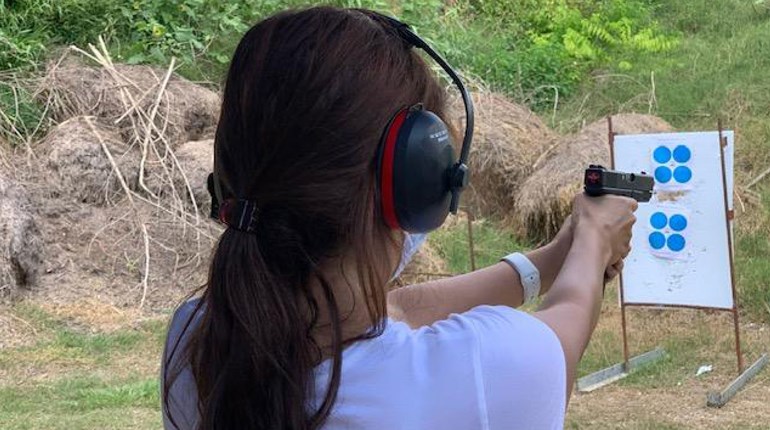
The trigger is one of the most important parts of a firearm, as without it there would be no way of starting the ignition process. Something needs to cock and/or release the firing pin to strike the primer, detonating the cartridge or shotshell. With that in mind, there are seven types of common triggers, each performing a different task to discharge a firearm. Some even can engage or disengage a firearm’s safety. The seven types of trigger systems are: single-stage, double-stage, single-set, double-set, single-action, double-action and safe-action.
Single-Stage Triggers
Single stage is the most common type of trigger. Single-stage trigger systems contain only one trigger blade, and has a single break point that releases the firing pin, setting off the ignition system. This type of trigger is static, containing no slack that needs to take up before the break is reached. This type of trigger is normally found on rifles and shotguns. The shooter applies steady pressure to the trigger until it breaks, and the firearm is discharged.
The break of the trigger is usually referred to in pounds. The common poundage for triggers is from 3 lbs. to 6 lbs. For example, a 4-lb. break would be referred to as a 4-lb. trigger. Most triggers can be adjusted by a qualified gunsmith, but caution should be taken when adjusting any trigger to be lighter. In fact, most gunsmiths refuse to adjust triggers below a 3-lb. pull.
Double-Stage Trigger
Double-stage triggers have two distinct “pulls” to discharge the firearm. The first pull is “long” and “light,” and the second pull is “heavy” with a crisp break. There is a very distinct “wall” between the two pulls. Once the shooter hits this wall, he or she knows by increased pressure on the trigger blade, the gun will discharge. This allows for more control and precision in shooting. This is a popular trigger system with modern sporting firearms shooters.

To properly operate the double-stage trigger, the trigger pull is done through both stages, in one motion, until the firearm discharges. If at any point you let off the pull before it discharges, you must start the process over from the beginning. This prevents the shooter from moving during the firing process without starting and stopping. It is important for the shooter with a double-stage trigger to dry fire practice so that he or she knows the correct amount of pressure to apply on the trigger blade to discharge the firearm.
Single-Set Trigger
Single-set trigger systems contain one trigger blade but can be operated in two different ways. This type of trigger is almost always found in rifles. The first way to operate a single-set trigger is to use it like a single-stage trigger. Once a cartridge is chambered, even pressure is applied to the trigger until it reaches its break, releasing the firing pin and setting off the ignition system. The trigger pull on a single-set trigger with a common single-stage trigger is usually set between 2 lbs. and 4 lbs.
The second way to operate a single-set trigger is to “set” it. The trigger of a single-set trigger is set while the shooter has the firearm mounted, sights aligned and ready to fire. This step is performed—on most such triggers--by slipping the index finger of the shooting hand behind the trigger blade and pushing the trigger forward. A trigger should never be set until the firearm is pointed in a safe direction and the shooter is ready to fire. The second rule of the “3 Rules of Safe Gun Handling—Keep Your Finger Off the Trigger Until Ready to Shoot.” Once the trigger is set, the firearm is ready to fire, so extra caution must be taken to avoid an accidental discharge as the pull weight will be much, much lighter. Likely measured on ounces, not pounds of pull weight. Once the trigger is set, the shooter needs to move his or her index finger to the front of the trigger blade. At this point, it only takes a few ounces of pressure to discharge the firearm.
This type of trigger was designed for two purposes: It allows for hunters to use the single-set trigger as a single-stage trigger; and it allows for long-range precision shooters to set the trigger for extreme accuracy.
Double-Set Trigger
The double-set trigger is similar to the single-set trigger except that it has two triggers instead of a single trigger. Also like the single set triggers, double-set triggers were almost always found in rifles. These types of triggers are usually found on older muzzleloaders and hunting firearms into the 1950s such as the Mannlicher-Schoenauer rifles.

The double-set trigger system contains two triggers, with the forward one being the set trigger and the rearward one being the discharging trigger. Like the single-set trigger, this trigger system should never be set until the shooter is ready to fire due to the chance of an accidental discharge. Also like the single-set trigger, the firearm can be operated two ways. The first is to operate the rearward trigger like a single-stage trigger or common trigger and the second way is to set the first trigger and discharge the firearm with the second trigger.
To operate the set, the shooter places his or her index finger of the shooting hand on the first trigger. The trigger is pulled until you hear an audible “click,” and the trigger stops moving rearward. The shooter then needs to move his or her index finger to rear trigger. It only takes a few ounces to pull the rear trigger to discharge it, so the shooter needs to be sure of his or her target.
Single-Action Trigger
The single-action trigger is usually found in firearms with external hammers such as single-action revolvers and 1911 pistols. With single-action triggers the trigger only performs one function: releasing the hammer. With this system, the shooter must manually cock the hammer of a revolver before pulling the trigger. If using a 1911 pistol, the shooter must rack the slide of the pistol before the first shot. After the first shot the slide cocks the hammer each time the action ejects and loads a new round. Each pull of the trigger of a single-action revolver also rotates the cylinder to align a new round with the action.

Double-Action Trigger
The double-action trigger is usually found in firearms with internal or external hammers such as double-action revolvers and double action/single action pistols such as the Berretta 92FS pistols. With double-action triggers the trigger performs two functions, the trigger cocks and releases the hammer. When using a firearm with a double-action trigger, the shooter pulls the trigger, and the hammer of the firearm moves to the rear where it reaches its break point. The hammer then swings forward, striking the firing pin and starting the ignition process. Each pull of the trigger of a double-action revolver also rotates the cylinder to align a new round with the action.
Safe-Action Trigger
Trigger blade safeties or “Safe Action” systems are often found on striker-fired pistols. Typically, an external trigger safety, often an integral blade or tab in the trigger blade’s front face or, sometimes, the lower portion of an articulated trigger blade itself, needs to be depressed before the trigger can move rearward to act on the trigger bar and then the striker. If the safety lever in the trigger is not moved by finger pressure, the trigger is blocked by the safety and should not move. Clearing the safety is usually a natural part of the trigger press, but, unless done, it usually mechanically prevents trigger movement.
The advantage of this type of a safe-action trigger system is that each pull of the trigger is the same. This allows for a consistent trigger pull for accuracy and precision shooting. Dry firing and practicing a trigger reset greatly increases a shooter’s performance, especially with a safe-action trigger system. This type of trigger system also makes for an extremely safe firearm, as long as the 3 Rules for Safe Gun Handling are followed:
- ALWAYS keep the gun pointed in a safe direction.
- ALWAYS keep your finger off the trigger until ready to shoot.
- ALWAYS keep the gun unloaded until ready to use.
It is important for firearm owners to know the type of trigger system they have in their guns. This is for safety as well as accurate shooting. Responsible gun owners should educate themselves on their firearms and enroll in appropriate basic firearm courses. There are many parts of a firearm, and the more you know about your firearm the more you understand how it operates. Manufactures are always looking at how to make firearms better in the areas of performance and safety systems. You, as a gun owner, are an integral part of these systems.














































